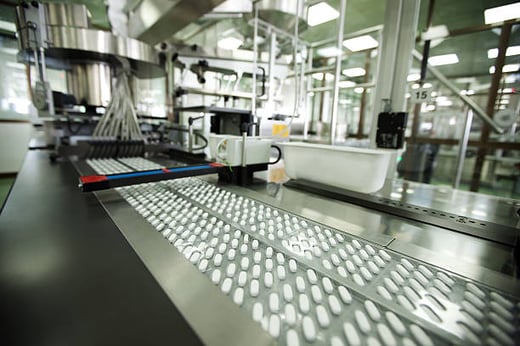
Bridging Flow Manufacturing and Batch Production: A New Era for Pharmaceutical IT Leaders
Pharmaceutical manufacturing is typically synonymous with batch production. Driven by regulatory rigor and product complexity, batch processing has long been considered the only viable mode for drug production. However, growing market pressure for speed, traceability, and cost efficiency is challenging this legacy. As a result, Manufacturing IT leaders are now at the forefront of a paradigm shift—exploring how flow manufacturing principles can be adapted to batch environments.
The answer lies not in replacing batch production but in rethinking how it’s executed—through smart orchestration, real-time visibility, and advanced planning systems. Integrating PlanetTogether APS with platforms like SAP, Oracle, Microsoft, Kinaxis, or Aveva offers a powerful opportunity to reshape batch operations with flow manufacturing benefits: reduced waste, improved throughput, and greater responsiveness.
Understanding the Concepts: Flow vs. Batch Manufacturing
Batch Production refers to producing a set quantity of a product at one time. Each batch must complete one stage before moving to the next, making it ideal for the tightly regulated and high-value nature of pharmaceutical manufacturing.
Flow Manufacturing, on the other hand, emphasizes continuous movement of products through the production process with minimal idle time. It’s a hallmark of lean and just-in-time (JIT) systems—efficient, scalable, and demand-responsive.
At first glance, these systems seem incompatible. But Manufacturing IT professionals now have the tools to blend the control of batch production with the efficiency of flow, especially through digital transformation and APS integration.
Why the Shift Matters in Pharma
The pharmaceutical industry is evolving under pressure from:
Global pandemics and supply shocks demanding faster response cycles
Personalized medicine and smaller batch sizes requiring agile production
Increasing regulatory burdens pushing for digital traceability
Cost containment initiatives requiring better resource utilization
Flow principles such as synchronized operations, standardized work, and level scheduling can bring structure and visibility to batch processes—making them leaner without compromising compliance. Manufacturing IT systems must become enablers of this hybrid model.

The Role of APS in Enabling Flow in Batch Environments
Enter Advanced Planning and Scheduling (APS) systems like PlanetTogether, designed to synchronize production across multiple constraints—people, machines, materials, recipes, and more. When integrated with ERP platforms such as SAP, Oracle, Microsoft Dynamics, or Kinaxis SCM, and MES solutions like Aveva, PlanetTogether enables real-time coordination and precision planning.
Key capabilities supporting flow in batch environments include:
Finite Scheduling of Batches Across Resources
Flow manufacturing requires continuous movement—but batch production has dependencies like cleaning, changeovers, and validation steps. PlanetTogether allows detailed constraint modeling and finite scheduling, minimizing idle times and bottlenecks.
Real-Time Visibility and Feedback
Through integrations with MES platforms like Aveva or ERP systems like SAP, batch execution data (e.g., cycle times, equipment status, deviations) feeds back into PlanetTogether. This closes the loop between planning and execution, allowing schedule adjustments in real-time.
Pull-Based Scheduling
PlanetTogether supports demand-driven planning methodologies. When integrated with Kinaxis or Microsoft Dynamics, it enables pull-based production based on real-time demand signals—key to adopting flow principles in a traditionally push-oriented environment.
Changeover Optimization
Frequent product changeovers challenge flow in pharma batch production. APS helps sequence batches to reduce changeover frequency and duration. With SAP or Oracle integration, this optimization cascades into inventory, procurement, and labor planning.
Work Cell Balancing and Takt Time Simulation
Flow systems rely on balanced work cells and takt-time alignment. PlanetTogether, using historical MES and ERP data, can model and simulate optimal takt rates, allowing pharma manufacturers to design flow within batch lines—particularly in packaging or downstream operations.
Building the Digital Thread: IT Integration Strategy
To implement flow-inspired batch production, a unified data and control architecture is crucial. Manufacturing IT leaders should champion:
End-to-End Integration
Integrating PlanetTogether with SAP, Oracle, Microsoft, or Kinaxis ensures a continuous flow of information between demand planning, production scheduling, and execution. For example:
Forecast changes in Kinaxis can auto-adjust production plans.
Order commitments in SAP trigger batch scheduling in PlanetTogether.
Downtime events captured in Aveva MES prompt schedule updates.
Digital Twins for Process Simulation
Using data from ERP and MES integrations, PlanetTogether can simulate alternate batch flow configurations, changeover strategies, and workforce allocations—helping IT teams model best-case scenarios for “flow within batch” execution.
Role-Based Dashboards and KPIs
IT systems can empower floor supervisors, planners, and quality teams with targeted dashboards. These show real-time KPIs like cycle efficiency, schedule adherence, or lead time reduction—bringing visibility and accountability to flow-inspired initiatives.
Challenges and How to Overcome Them
While the benefits are clear, IT leaders must address several hurdles:
| Challenge |
Solution |
| Legacy infrastructure unable to support real-time data |
Implement middleware layers or modern integration platforms |
| Siloed systems (ERP, MES, LIMS) |
Standardize interfaces and use PlanetTogether as a scheduling bridge |
| Resistance to change on the floor |
Use pilot programs to demonstrate benefits of flow-based scheduling |
| Regulatory hesitancy |
Document change control processes thoroughly and validate integrated systems rigorously |
The future of pharmaceutical manufacturing will not be defined by a binary choice between batch or flow. Instead, it will be shaped by intelligent hybrids powered by real-time data, predictive scheduling, and synchronized execution. For Manufacturing IT leaders, the integration of PlanetTogether with ERP and MES systems offers the technological backbone to turn this vision into reality.
Now is the time to move beyond static batch plans and toward a future where pharma production flows with purpose, precision, and performance.
Are you ready to take your manufacturing operations to the next level? Contact us today to learn more about how PlanetTogether can help you achieve your goals and drive success in your industry.